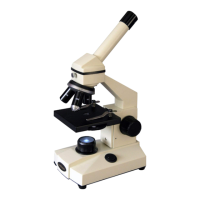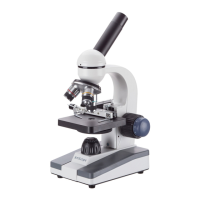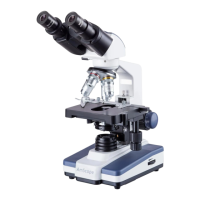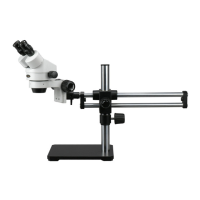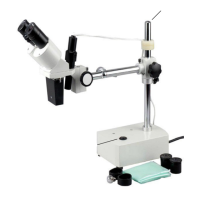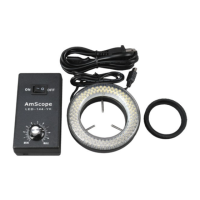61
MU Series (Windows)
User’s Manual
Top Navigaon Bar
Process Menu (Connued)
Color Composite - The “Color Composite” tool allows the user to select various color channels, and separate
them into independently controlled elements. This allows a user to isolate specic colors of interest and elimi-
nate others--parcularly useful in uorescent microscopy. This tool is very detailed, and will be covered later in
the “Color Composite” secon of this manual.
Segmentaon & Count - The “Segmentaon & Count” funcon allows the user to use various histograms and
methods to create segments of what one is interested in within an image, and exclude the rest, or to perform a
count of objects of interest within the eld of view.
Denoise - The “Denoise” funcon allows the user to use several methods to remove noise from the image, cre-
ang a cleaner and crisper image. This tool is covered in the “Denoise” secon of this manual in greater detail.
Sharpen - The “Sharpen” tool is a funcon that allows the user to command the soware to create a sharper
image than the original capture by combining an unsharp posive image mask with the image’s negave,
ulmately providing a beer image than before. This tool is covered in depth in the “Sharpen” secon of the
manual.
Color Toning - The “Color Toning” funcon encompasses a number of tools used to calibrate the image based
on the color representaon of the monitor the image is being viewed with, as well as calibrang manipulaon
of the histogram for opmal results. “Color Toning” will be covered in depth in a later secon.
Filter - The “Filter” funcon contains a number of tools used to enhance the image based on a number of dif-
ferent scenarios, such as using a high pass lter to enhance high-frequency informaon by adjusng contrast-
ing pixels within a certain frequency. The lters here are complex but very powerful, and are covered in detail
in the “Filters” secon of the manual.
Image Stacking- The “Image Stacking” funcon is used to take the average of mulple photos taken at the
same point of reference, creang stronger photos with a greater signal to noise rao (especially in low light mi-
croscopy such as uorescent and darkeld microscopy). “Image Stacking” will be covered in depth in its future
secon.
Line Prole - The “Line Prole” funcon is used to create a graph illustrang the distribuon of pixels along a
line by color intensity.
Surface Plot - The “Surface Plot” funcon works similarly to the “Line Prole” tool, however, instead of creat-
ing a graph, it creates a 3D representaon of the sample based on color intensity and color posion of each
pixel. “Surface Plot” will be covered in more detail in its own secon.
Pseudo Color - When a color is in grey scale, the “Pseudo Color” command can be used to color the image,
useful in highlighng only specic details, or for temperature overlays.
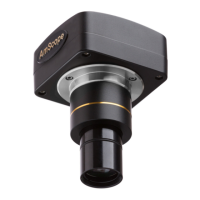
